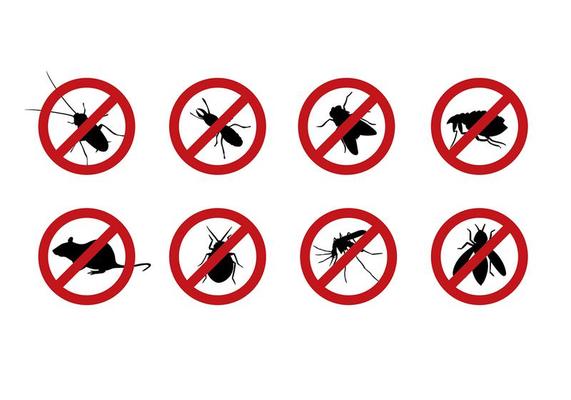Quality A1 Pest Control Services Charlotte - Protect Your Home
Bed Pest Therapy Malfunction: Comparing Chemical Vs. Non-Chemical Solutions
In the world of insect control, particularly when handling the consistent concern of bed insects, the option between chemical and non-chemical therapy services can be an essential one. Both strategies supply distinct benefits and downsides, influencing elements such as efficiency, security considerations, and total cost. By analyzing the nuanced information of each technique, a more clear understanding of which path to seek in addressing a bed bug invasion can be achieved.
Efficiency of Chemical Therapies
Chemical therapies for bed insect infestations have been widely acknowledged for their fast and potent effectiveness in eradicating these parasites. When taking into consideration the efficiency of chemical treatments, it is critical to understand that they can offer a thorough and quick service to a bed pest trouble.
Moreover, chemical therapies have the advantage of using recurring effects, suggesting that they can continue to get rid of bed bugs even after the first application. This residual action is particularly valuable in combating any kind of potential re-infestations. Furthermore, the rapid action of chemical therapies can bring alleviation to individuals dealing with severe bed bug invasions, permitting them to regain control of their space quickly.
Safety And Security Interest In Chemical Solutions
When making use of chemical options for bed insect therapy is guaranteeing the security of residents and the environment,One vital aspect that needs cautious consideration. While chemical therapies can be efficient in removing bed pests, they may present risks otherwise managed effectively. One of the main safety and security interest in chemical services is the potential damage they can create to human health. Direct exposure to particular chemicals made use of in bed insect therapies can cause respiratory issues, skin irritation, or various other adverse responses, especially in people with pre-existing conditions or level of sensitivities. Additionally, improper application or dose of chemical pesticides can result in poisonous residues sticking around in the treated location, presenting long-lasting health risks to residents.
In addition, the ecological impact of chemical remedies is another substantial consideration. Some chemicals utilized in bed bug therapies may be hazardous to useful pests, wildlife, and communities if they seep into the dirt or water systems. It is necessary to utilize chemical treatments carefully, complying with safety and security guidelines, and considering less poisonous options to reduce these threats and guarantee the effective and risk-free administration of bed insect invasions.
Advantages of Non-Chemical Methods
Taking into consideration the potential safety and security issues and ecological effect connected with chemical solutions for bed insect treatment, exploring non-chemical approaches provides an encouraging option with numerous unique benefits. Non-chemical techniques provide a safer option for families, particularly those with individuals, children, or pets conscious rough chemicals. important link These techniques remove the risks of exposure to hazardous compounds, minimizing the possibility for adverse health impacts. Additionally, non-chemical treatments are ecologically pleasant, as they do not contribute to air or water air pollution, making them a lasting choice for bug control.
Additionally, non-chemical options can be reliable in targeting bed pests, including hard-to-reach locations where chemical treatments may not permeate - A1 pest control charlotte nc bed bugs. Approaches such as heat therapy, vacuuming, steam cleansing, and bed mattress encasements supply complete eradication without the use of dangerous chemicals.
Limitations of Non-Chemical Treatments

Furthermore, non-chemical therapies frequently need multiple applications to achieve successful removal. This can be taxing and may not always assure total elimination of all bed over here pests and their eggs, especially in hard-to-reach or concealed places.
Furthermore, the success of non-chemical therapies greatly depends on correct application and thoroughness, which can be challenging for people without expert experience. Inadequate application of non-chemical approaches may lead to incomplete obliteration, causing relentless invasions and the need for extra therapies.
Therefore, while non-chemical treatments have their benefits, it is important to acknowledge these restrictions and consider them when determining one of the most effective approach for managing bed insect invasions.
Expense Contrast: Chemical Vs. Non-Chemical Options
Given the restrictions associated with non-chemical therapies, an essential facet to assess in the context of bed bug administration is the cost contrast between chemical and non-chemical alternatives. In comparison, non-chemical treatments like warm treatment or heavy steam can be much more pricey, with expenses varying from $1,000 to $6,000 for an entire home. While the first cost of chemical treatments may seem lower, multiple therapies might be required to fully get rid of the problem, possibly enhancing the overall price.
Verdict

Taking into consideration the prospective safety worries and ecological effect connected with chemical remedies for bed insect therapy, discovering non-chemical approaches offers an encouraging choice with several distinct advantages.Offered the limitations linked with non-chemical treatments, an essential element to examine in the context of bed insect administration is the cost contrast between chemical and non-chemical options. In contrast, non-chemical therapies like warmth therapy or vapor can be more pricey, with costs varying from $1,000 to $6,000 for a whole home. While the first cost of chemical therapies might appear lower, try these out multiple therapies might be required to completely remove the problem, potentially enhancing the general cost.In verdict, when comparing chemical and non-chemical bed bug treatment choices, it is necessary to take into consideration efficiency, safety, advantages, restrictions, and price.